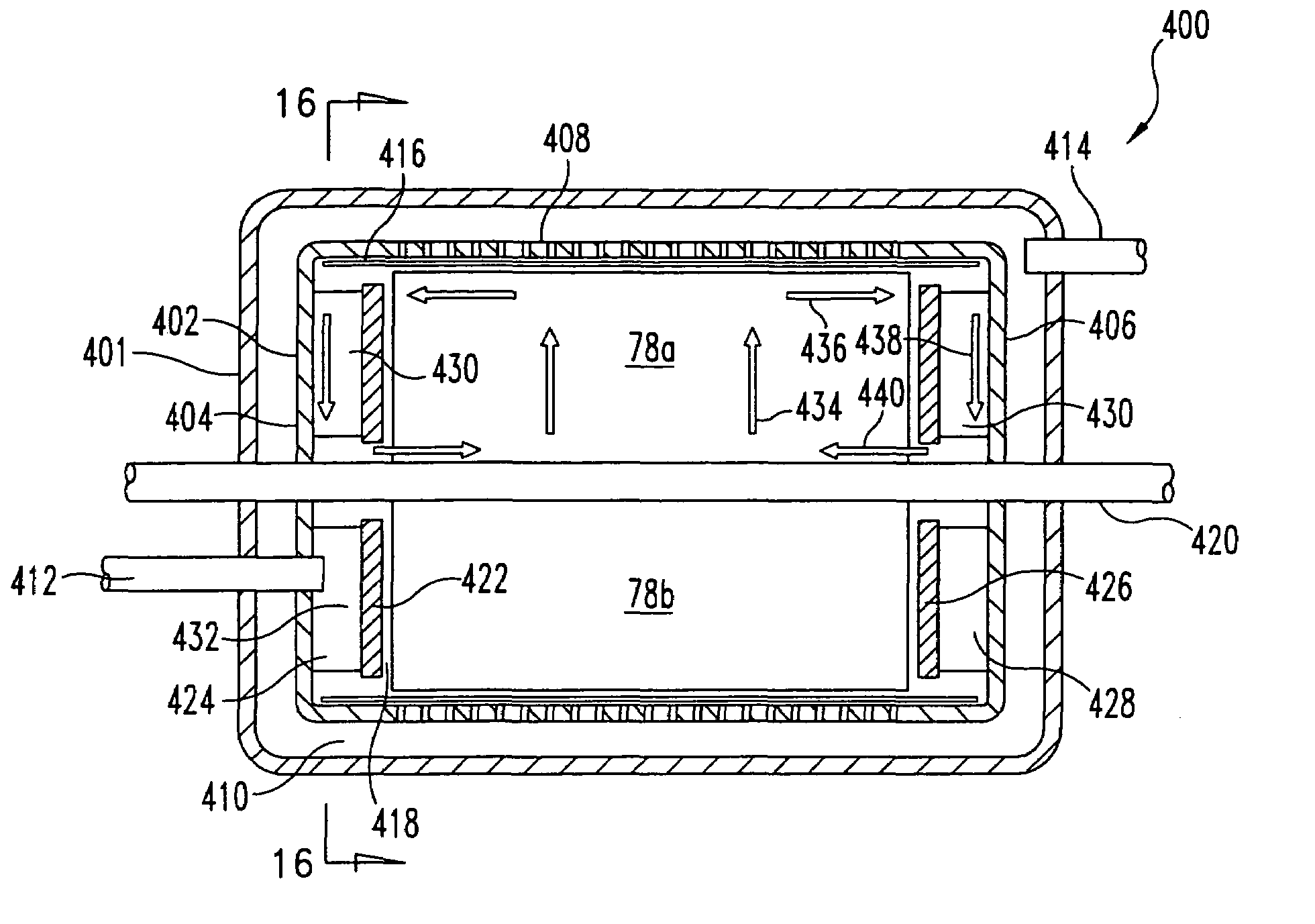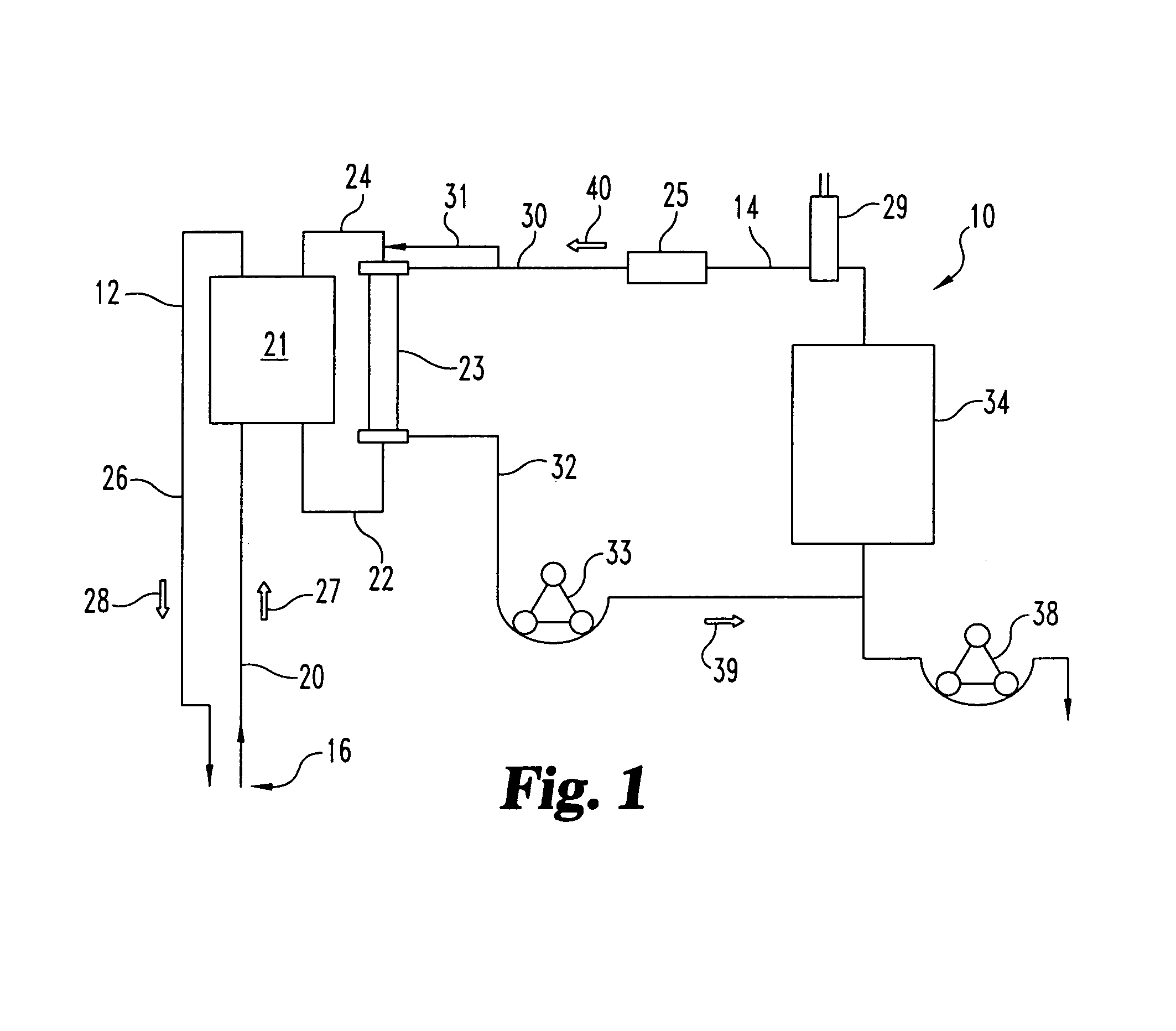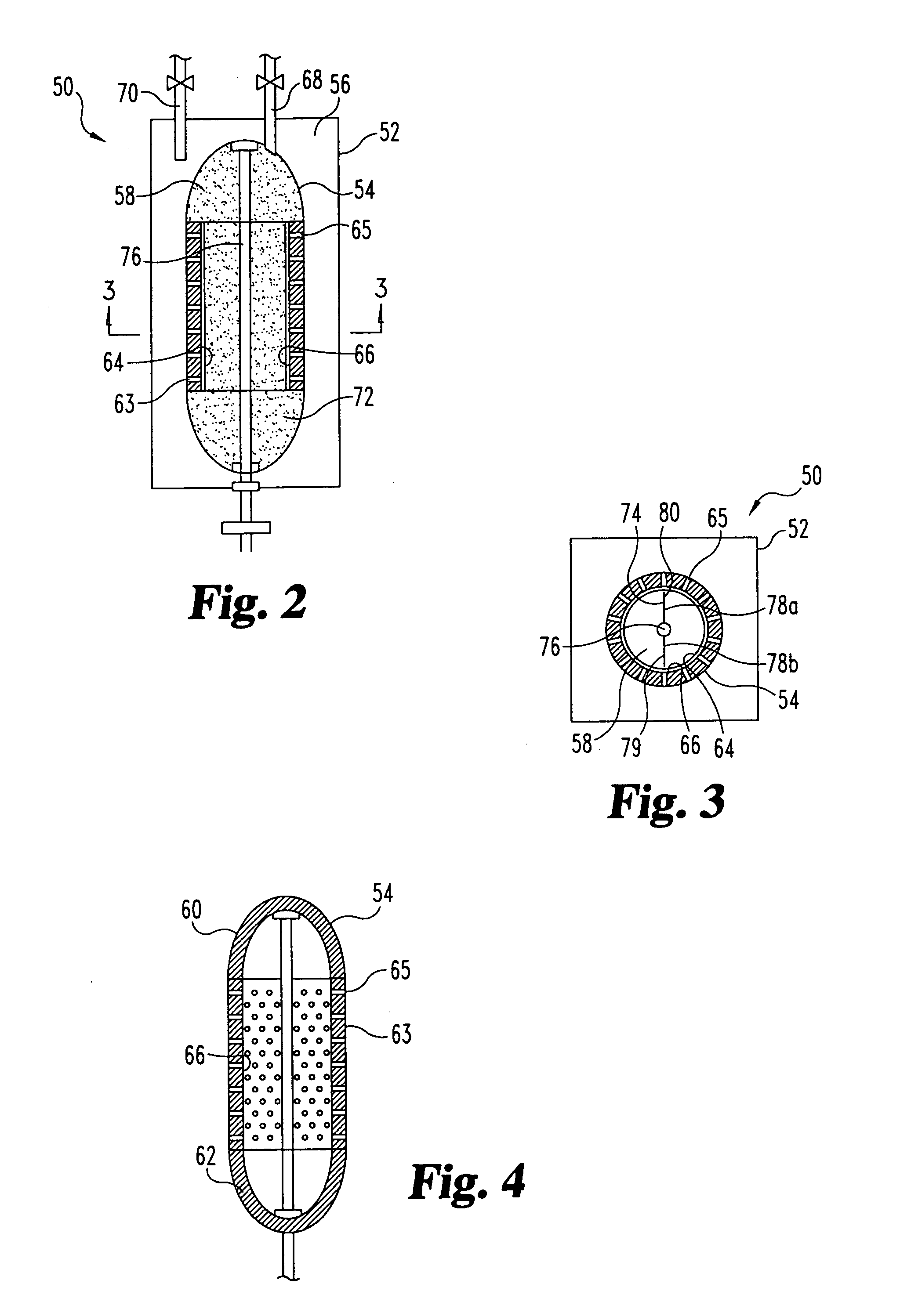Sorbent reactor for extracorporeal blood treatment systems, peritoneal dialysis systems, and other body fluid treatment systems
a sorbent reactor and extracorporeal blood technology, applied in biological water/sewage treatment, separation processes, filtration separation, etc., can solve the problems of unidirectional flow of blood through the blood-side circuit, low capacity and affinity of sorbent for many nutrients, and significant technical challenges, so as to avoid clogging of the filter in the reactor and reduce or zero the effect of pressure across the filter
- Summary
- Abstract
- Description
- Claims
- Application Information
AI Technical Summary
Benefits of technology
Problems solved by technology
Method used
Image
Examples
Embodiment Construction
[0054]For the purposes of promoting an understanding of the principles of the invention, reference will now be made to the embodiments illustrated herein, and specific language will be used to describe the same. It will nevertheless be understood that no limitation of the scope of the invention is thereby intended. Any alterations and further modifications in the described processes, systems, or devices, and any further applications of the principles of the invention as described herein, are contemplated as would normally occur to one skilled in the art to which the invention relates.
[0055]FIG. 1 is a schematic illustration of an extracorporeal system 10 in accordance with the present invention. System 10 is composed of a blood circuit 12 and 22 and a treatment fluid circuit 14. A treatment fluid flows through circuit 14. If desired, the treatment fluid can contain beneficial additives that can be transferred to the blood. Typically, the treatment fluid can include any fluid that is...
PUM
| Property | Measurement | Unit |
|---|---|---|
| particle size | aaaaa | aaaaa |
| pore sizes | aaaaa | aaaaa |
| particle size | aaaaa | aaaaa |
Abstract
Description
Claims
Application Information
 Login to View More
Login to View More - R&D
- Intellectual Property
- Life Sciences
- Materials
- Tech Scout
- Unparalleled Data Quality
- Higher Quality Content
- 60% Fewer Hallucinations
Browse by: Latest US Patents, China's latest patents, Technical Efficacy Thesaurus, Application Domain, Technology Topic, Popular Technical Reports.
© 2025 PatSnap. All rights reserved.Legal|Privacy policy|Modern Slavery Act Transparency Statement|Sitemap|About US| Contact US: help@patsnap.com



